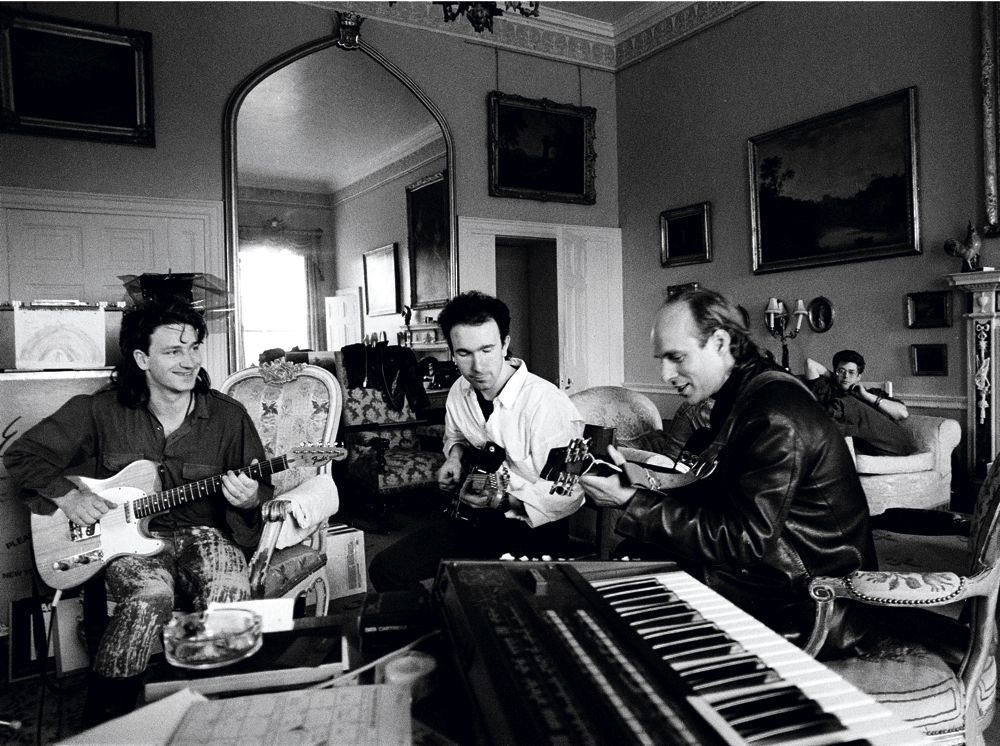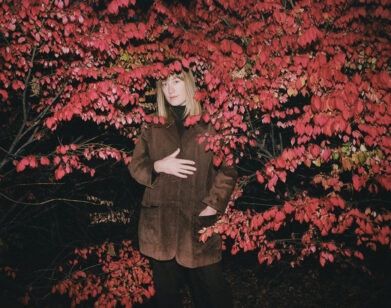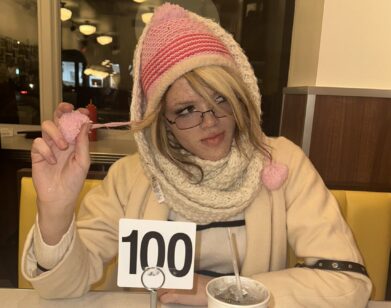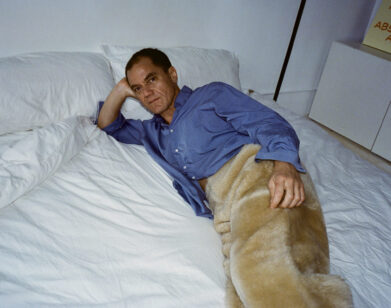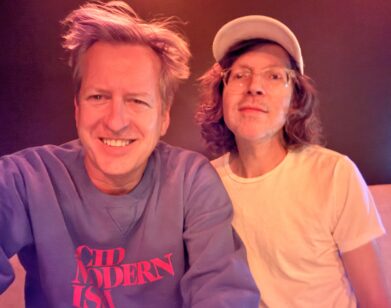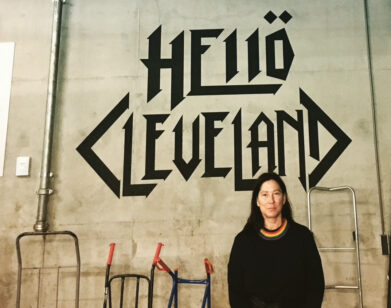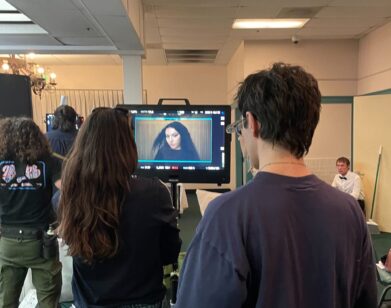Brian Eno
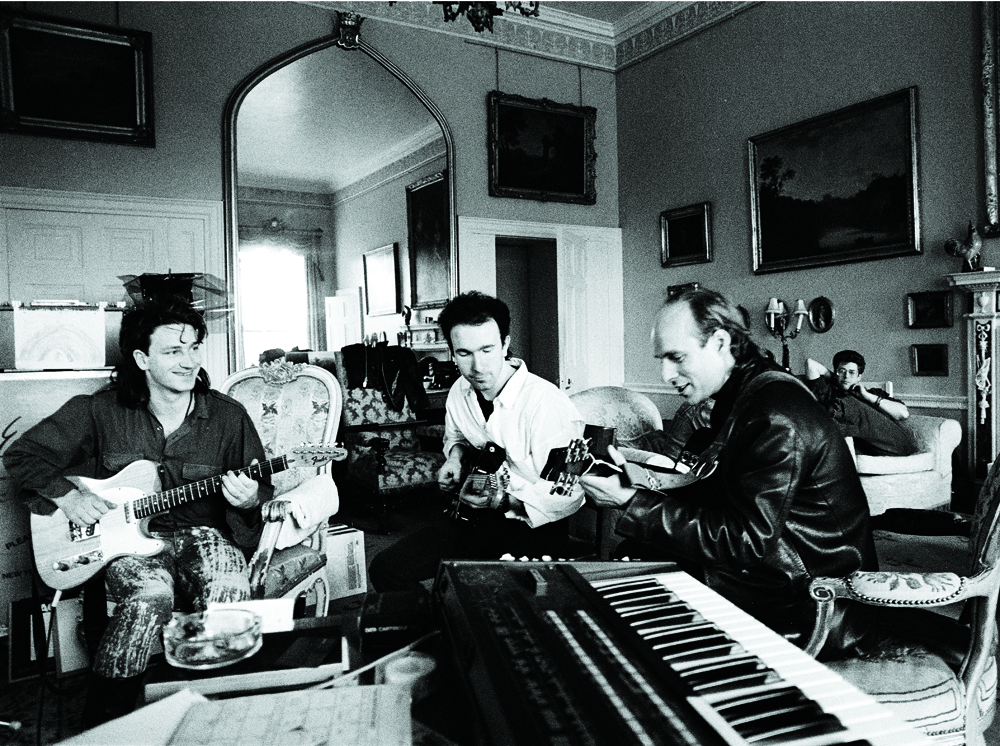
“I periodically realize every few years that the only person whose taste I really trust is me.” Brian Eno
If humans were able to hear light and parse the poetry of the spectrum, then perhaps there would be no need for Brian Eno, who seems to do it effortlessly. While the rest of us are generally content to hear sound, Eno can clearly see it. How else to explain the elaborate sonic color fields and glowing soundscapes that he creates, which feel as much like floating shapes and waves of light as they do music? And how else to make sense of a body of work that has been by turns challenging and definitive and spread across an expanse of disparate worlds and genres, from his early work with Roxy Music, to his ever-evolving solo oeuvre, to the colossal swoosh of his frequent collaborations with U2, to his numerous art projects, compositional gambits, and multimedia installations—not to mention the three ambient-music-generating apps, Scape, Bloom, and Trope, that he has created with musician and software designer Peter Chilvers.
Eno, though, has always had the good taste to never confuse grandeur with bombast. From his first gig with Roxy Music in 1971, it was clear that he was not going to play the role of rock musician as anyone had before. (He often preferred to play off stage, behind the mixing board, processing the sound with a VCS3 synthesizer, even as he sang background vocals.) Eno helped paint David Bowie‘s late-’70s “Berlin Trilogy” of Low (1977), Heroes (1977), and Lodger (1979) with a sense of minimalist discipline and a saturated electronic whir without sacrificing Bowie’s sense of playfulness or his desperately romantic croon. With Eno behind the boards, Talking Heads catapulted from quirky New Wave outfit to mind-blowing world-funk collective, and his later work with Heads leader David Byrne, the co-credited 1981 album My Life in the Bush of Ghosts, successfully traversed a precarious edge of experimental music in its use of unconventional instrumentation and found and sampled sounds. But one of Eno’s longest and most sustained creative partnerships has been with U2, which began when he and Daniel Lanois joined forces to produce the Irish foursome’s brilliantly elliptical 1984 album The Unforgettable Fire, and continued as the group transformed itself from a club act into a force that could dominate football stadiums to the last great big rock group standing without ever compromising its creative ambition or sense of spirituality. (He also worked with U2 as a full member of the band on Original Soundtracks 1, a 1995 record released under the name Passengers, which features a collection of compositions for films that, for the most part, do not exist.)
Eno’s very long list of both collaborations and collaborators, which features artists as diverse as Robert Fripp, John Cale, Nico, Robert Calvert, Michael Nyman, Devo, James, and Coldplay, is so eye-popping and eclectic that it often threatens to obscure the creative success of his own early art-pop records, such as the masterpiece Here Come the Warm Jets (1973) and the cult favorites Taking Tiger Mountain (By Strategy) (1974) and Before and After Science (1977). His most recent album, Lux (Warp), which was released this past November, picks up on yet another thread in his discography, building upon the impressionist narrative set forth with 1975’s Discreet Music with an ambient work created to exist in the baroque setting of the Great Gallery of the Palace of Venaria near Turin, Italy. Subtle and seductive, Lux incorporates all of the best elements of his seminal late-’70s ambient records such as Ambient 1: Music for Airports and Music for Films (both 1978)—along with a few twists—and follows through on what Eno famously described in the liner notes to Discreet Music as the ambition to “make a piece that could be listened to and yet could be ignored.” (Interestingly, Lux was presented in a number of different environments, ranging from churches to, funnily enough, an airport and movie theaters.)
Eno, now 64, has always been revered by avant-gardists and pop fans with equal zeal. He also has much in common with his interviewer here, Laurie Anderson, herself a musician, performer, and visual artist but, like her subject, also a consummate innovator and inventor. (Anderson is responsible for, among other things, the Talking Stick MIDI instrument as well as a magnetic-tape bow violin.) The pair first worked together on Anderson’s 1994 album Bright Red, and recently reconnected by phone.
———
LAURIE ANDERSON: I’ve listened to this album, Lux, many, many times now, and it’s very beautiful. It’s also incredible in cars. Did you ever drive around with it?
BRIAN ENO: I haven’t tried it in the car. I’ve listened to it on a train, on headphones; it’s very nice on headphones on a train. In fact, you can easily miss your station.
ANDERSON: You know, when we were working in New York, we had this thing about, “If it goes with the river, then it goes on the record.” I always think of that. How would you describe your criteria for that? I could think of mine, but when you looked at the river, what would you say the music had to do or not do?
ENO: Well, for me, it was something to do with stillness and non-chaoticness—some sort of belonging, rather than something contrived that just appeared last night and will disappear this evening. It was the sense of wanting to make something that felt like it had a place in the world, rather than something that you just kind of stuck on for a little while to see how it works. The feeling of something that felt rooted and properly positioned in that sense, I suppose. That was what the river was for—to remind me of that link.
ANDERSON: A sense of place. What about a sense of the room and the place where the music was made? Do you hear that in music?
ENO: Well, this piece was, of course, originally made for a particular room [the Great Gallery of the Palace of Venaria]. The palace is an enormous building, and the gallery itself is about a hundred meters long and 15 meters high and 10 meters wide. It has the most incredible reverb. It’s like a cathedral, you know, so it’s a fantastic sound. The other thing that’s interesting about the building is that it has enormous windows everywhere. It’s got huge amounts of light flooding it, so it’s almost like being outside with baroque ornaments floating around.
ANDERSON: What’s outside the windows?
ENO: On one side there’s a small town, which is the town of Venaria, and then on the other side there are these huge Versailles-like gardens. The interesting thing is that they’re connected by a single straight road, which runs right through the building—not physically, but visually. It runs right through the middle of the building and through the center of the gallery itself. So it’s an amazing piece of architecture. It’s the kind of thing that someone like Peter Eisenman would come up with, only it was built in the 1700s.
ANDERSON: And the road came later? Or the palace was built around this idea of being bisected by a road?
ENO: The sense I have is that the road existed prior to the building. That may not be true, but I think it certainly looks that way, because the village is pretty old. So I assume it was built around that road.
ANDERSON: What about the images for the piece?
ENO: Well, again, I realized when I got to the interior of the palace’s gallery that everything was about light there. It wasn’t really about the building as such—it was about the way the building invited light into it. You were terribly conscious of every different mood of the day. In fact, my first title for the album was actually The Play of the Light. But the first day I went there, there was an amazing storm. I’ve never seen rain like that. So I suddenly started thinking about how the gallery even invited weather inside—that this gallery was really a place where you could experience the outside in comfort, actually. You could sit in the middle of this incredible rainstorm and not get wet. Wonderful idea. So when I began to think about a cover for the album, I started to look through pictures I had taken, and I found this one of a tree outside of the Serpentine Gallery in London. I liked it because it had a lot of shadow and dappling, so I thought, Hmm… I’ll work on that. But I had a lot of trouble with that cover because, even though I liked it a lot, quite a few people didn’t. [laughs]
ANDERSON: Why not? That’s crazy.
ENO: I don’t know, but some people really didn’t like it and tried quite hard to persuade me not to use it. But I periodically realize every few years that the only person whose taste I really trust is me. [both laugh] Well, I don’t say that to mean my taste is good or anything like that. It’s just consistent.
ANDERSON: Consistency is good.
I found that rather interesting that you could compose by absence rather than presence. Brian Eno
ENO: I know this is a bit off the subject, but I wanted to ask you something. You said that you lost a whole lot of stuff in Hurricane Sandy?
ANDERSON: I did, yeah. At first it was horrible—like, devastating—because it was a lot of old work and things that you store somewhere and don’t think really matters. For example, 30 slide projectors that I would hook up together. [laughs] Am I ever going to use 30 slide projectors again in sync? Well, definitely not now, but I probably wouldn’t have. And a lot of keyboards—that was the sad thing, losing these kind of old keyboards. Six truckloads of things came out of our basement. It was not only me, so I probably had, like, two and a half giant truckloads of stuff. But it’s immediately garbage.
ENO: Sometimes losing things like that can be slightly liberating. I remember when I lived in New York. I’d lived there for five years, so I’d accumulated a fair amount of stuff, but I had to go away to Japan to do a show. And while I was in Japan, my girlfriend from New York rang me and said, “Your place has just been broken into and everything has been stolen.” But you know what? My immediate feeling was relief, because I thought, “Oh, I don’t have to go back to New York. I’m free. I can go anywhere I want now.” I’ve never forgotten that. It was such a surprising reaction. I was so surprised because I suddenly felt liberated. All of the things I lost didn’t really matter to me that much.
ANDERSON: Exactly. It doesn’t really matter. I’ve been through worse.
ENO: So are you feeling liberated?
ANDERSON: I don’t know if liberated is the word. Lighter maybe. You didn’t care about the stuff that you lost after a week or so, right?
ENO: Honestly, I couldn’t even remember what it was. I still can’t. I mean, I can remember one or two things that went. I’m not very nostalgic about them but I can remember them. But most of it, I don’t even know what it was… I remember a carpet that I rather liked.
ANDERSON: So are the horns on Lux real?
ENO: No.
ANDERSON: I thought those were real, far away horns.
ENO: Yeah, it does sound like that. There are real strings in there, though they’re all played by one person, my friend Nell Catchpole. There’s also an instrument called the Moog Guitar. It’s a fantastic instrument.
ANDERSON: Oh, I’ve heard about that.
ENO: It’s an amazing instrument. It’s a completely new instrument, actually. It’s called a guitar, but the people who have started using it to do interesting things are moving far away from any character guitars have had traditionally. The only instruments on the album are piano, strings, this Moog Guitar, and some synthesizers. But the synthesizer sounds I was using are ones that I’ve been working on for quite a few years, and they can sometimes sound like they might be horns.
ANDERSON: I really thought I heard some horns on there. I tried to do a lot of different things while I was listening to Lux, but it’s a little bit different from some of your other records I listen to in that this one pulls me back to what it’s doing more than the others. It’s more focused, in a way, than some of the others—certainly more than Drums Between the Bells [2011].
ENO: Yes, I think you’re right. It’s different in that it’s not the same musical mode all the way through, so it keeps shifting, and although those shifts are quite subtle, I think they are rather interesting. We pay emotional attention to them. It sounds like nothing has changed, but there is a change in the feeling, which compels attention. Just to let you know, the way Lux was made is that there are 12 sections in here, though two of them are joined together. So there are really 11 sections, in a sense, and each one uses five notes out of a palette of seven notes, and my palette is all the white notes on the piano. That was the original palette. So it’s very interesting to me that if you take a mode like that—and it’s just the major scale, actually—but you leave something out of it, then there’s a real tension produced by the absences. It’s a sort of vacuum that you feel, where you keep feeling the other note, but it never happens. I found that rather interesting that you could compose by absence rather than presence. I think that’s what’s going on, anyway.
ANDERSON: In terms of how the gallery was a bridge between these two places, how did that get into the structure of the music? Or did it not really?
ENO: Yeah, it did, just in a pragmatic way, because what I had to think about was, Okay, there are all these visitors who’ve come to look at the palaces and the problem is that they walk from one palace to the other through this beautiful gallery without really stopping to look at the gallery—and it’s arguably one of the finest pieces of baroque architecture in the world. So one of the questions was, can we do something that will detain them in the gallery for a bit where, instead of just walking through and seeing it as a conduit between palace one and palace two, can they be slowed down so they start paying attention to that building? What I was trying to think of was how to make a piece of music that could reward an hour of attention and could be interesting to sustain for an hour and not get annoying. Then, on the other hand, I didn’t want it to be annoying if you just were walking through in 20 seconds, or whatever it takes to walk through the gallery at full speed. So the problem was trying to make a piece of music for these different anticipated speeds of people using the place. Of course, most of the people going to the palace won’t be going to hear my piece of music, so you’re also working for an audience that isn’t particularly expecting a piece of music.
ANDERSON: Did you notice that people slowed down or stopped?
ENO: Well, I’ve not seen much of the use of it. I installed it and there was an opening, but, of course, the opening was like all other things…
ANDERSON: You couldn’t hear one note of it, probably.
ENO: Tragedy. [laughs] So I’ve asked the people in the palace to make some films. I just want to see how people are using the gallery and what they’re doing and whether they stay around. It seems to be working well from the reports I have, anyway.
ANDERSON: I think when people move through a place—even if it’s an art museum—they have a certain tempo, and it’s really hard to interrupt that, and also hard to do something that requires more than glancing, in a way. Things that have some kind of base in time have zero chance in situations like that. But it’s interesting that you could just change the tempo a little bit. How do you think it would have affected things if you’d put lyrics in there or some words and interpreted that flow that you were looking for in that way?
ENO: Well, you’re the expert at this. [laughs] I think that probably if you put lyrics or have any kind of narrative content at all, then it says to people that you either have to stop and listen or that you have to ignore it. You really have to make a decision in relation to narrative, don’t you? You have to say, “I’m gonna go with the story,” or “I’m not.” Whereas I think with music, you can sort of settle into it slightly differently and with a little bit more of a soft entry and a soft exit. Of course, we did try something like that, if you remember that “Self Storage” show [at an Acorn Storage Centre in Wembley, England, in 1995], where I used your voice in several of those installations. I thought that worked extremely well in many cases, and I think partly it was because your voice is inherently very musical, so you can just enjoy the sound of it without having to be especially focused on the content. The other thing was that I spaced the words out a lot so that it became very, very, very slow, and the words kind of became almost like little raindrops.
ANDERSON: Exactly. They were not really headed towards any kind of end-slash-conclusion, so they’re just word drifts.
ENO: I loved that experiment. I’d love to do something like that again.
ANDERSON: I would, too. I’ve always loved the Quiet Club [a series of ambient-style installations by Eno built around the notion of “a club that would calm me down”]. I imagined somehow that now that the record industry has sort of collapsed and people generally don’t have very good sound systems anymore, your Quiet Clubs would be like giant franchises of people just going to listen to things really quietly.
ENO: That’s a fantastic idea. [laughs] I would love that.
ANDERSON: Yeah, just dark and quiet places. Not terribly dark—they could exist in a giant hallway of light, like you’ve just described. But they could be places where there was just really great sound because that doesn’t exist anymore. Most people have no idea what something would sound like if it wasn’t an MP3.
ENO: Yes. Do you know this thing that’s been happening? I don’t know whether it’s happening in America, but in England they have these enthusiasts who get together and listen to an album together. They might take The Dark Side of the Moon and spend an evening where they listen to the album in the dark through an amazing hi-fi system.
ANDERSON: What a great idea. It’s like a book club for records.
ENO: Exactly. They have discussions. I think that’s really interesting to sort of say, “We’re going to take recorded music seriously.” I’ve never been to one of them, but apparently, they’re really fun to go to.
ANDERSON: It sounds intense.
ENO: We did something a little similar with Lux. We played in it various places all over the world, actually—churches, cinemas, galleries… We played it in Haneda Airport [in Tokyo]. We announced that the piece would be playing, and people could come along, and it was fantastic. I went to one of those in London [at St. Pancras Old Church], and people sat absolutely still for 75 minutes listening to it. There was one in New York City as well, at the Church for All Nations.
ANDERSON: I’m just going to look it up.
ENO: Sounds like a promising church, doesn’t it?
ANDERSON: It’s in the heart of New York City, in Midtown. I’ve never been to this place. It’s a Lutheran Church Missouri Synod, whatever that means. The home page has a quote from Ephesians: “This is not your own doing,” in case you wanted to know. “It is the gift of God, not a result of works, so that no one may boast.” [laughs] Okay.
ENO: Well, I wasn’t boasting.
ANDERSON: No, I didn’t hear you boasting. Sounds amazing.
ENO: Let me tell you one other thing about the Quiet Club, because there’s something else that’s kind of nice happening in England. I was asked by a hospital in Brighton [the Montefiore Hospital], a new hospital, to make a quiet room for the hospital because they have a lot of chemotherapy patients there, and they wanted a room where people having chemotherapy could sit and just relax a little bit and chill out. So they asked me if I would make a room for that. It’s not a very big room—it can probably only accommodate four or six people at a time. But I’ve made a light piece there, and I have this new piece of music I’ve been working on for it. In fact, this evening is its soft opening.
ANDERSON: Could you describe how you might have thought of this differently for the chemotherapy patients than the Day of Light people [a project for which listeners were invited to submit photographs taken while the album was being broadcast at different times of day]? Or is it similar?
ENO: Well, there’s an important difference, actually, which is that most of the people who will be listening to this piece in the “quiet room” will probably not be in a very good state mentally, so they won’t want to be irritated in any way at all. I’ve talked to a few people who had chemotherapy and I’ve said, “Can you remember what you liked and what you didn’t like? What was annoying and what pleased you?” And it seemed to me that the main consensus was that anything jagged, sudden, sharp-edged, or abrupt was very unwelcome. So I started making this piece of music where every sound has a very long, slow attack and a very long, slow decay. Most of the people who’ve seen it so far have not actually had chemotherapy. My main assistant had cancer when he was a child, and had two years of chemotherapy, so he’s been my main consultant on this. But I actually think it’s turning out quite well. Similar to the light piece, it’s all slow changes. It’s very gorgeous, in a way, and sort of refreshing.
ANDERSON: What a great thing to have music in hospitals. So this might sound boilerplate, but are there any new artists or new kinds of music that you’re inspired by at the moment?
ENO: There’s so much great music around at the moment that it’s embarrassing. Now, suddenly, musicians are able to publish their own work, and you don’t necessarily have to work through the record companies and the A&R departments and so on, so suddenly there’s all this stuff that’s coming out. Of course, there’s quite a lot of shit coming out too. But there’s so much good stuff. For example, I heard a song the other day that I so loved, by an American guy who goes under the name of Port St. Willow. The song is called “Amawalk,” and I just absolutely loved it. I thought, I can’t understand it and I can’t really see what is new about it, but I know I’ve never felt this feeling before. Then there’s somebody else who’s been around for a few years now who I think is absolutely fantastic, Owen Pallett. Do you know his work at all?
ANDERSON: Oh, yes. What’s your favorite piece of his?
ENO: There’s a piece called “Keep the Dog Quiet.” When I first heard that, I was absolutely riveted by it. The first note he sings is the weirdest note you’ve ever heard in the beginning of a piece of music. Just check it out. The album is called Heartland [2010] and this song is the second track. Owen Pallett has been around a little bit. I booked him for the Punkt festival in Norway this past September. His show was jaw-droppingly good. One of the other people I had in that festival was a young guy called Ebe Oke.
ANDERSON: I’ve been corresponding with him.
ENO: Yes, of course you know him. Very funny name.
ANDERSON: He sent me a really long essay he wrote about [German electronic music composer] Karlheinz Stockhausen. I asked, “Well, what do you like about Stockhausen?” And then he sent me something that was, like, his own course. It was really amazing.
ENO: He’s a good cat. So there’s quite a few other people—too many, really, to mention.
ANDERSON: So you’ve made music for hospitals, you’ve made music for airports, but did you ever make elevator music?
ENO: [laughs] I’ve never tried it. I’m sure I’ve been used a lot in elevators, though.
ANDERSON: I bet you could make some incredible things.
ENO: It would need to be a very long elevator.
Laurie Anderson is a performance artist and musician. She is currently touring with the Kronos Quartet.

